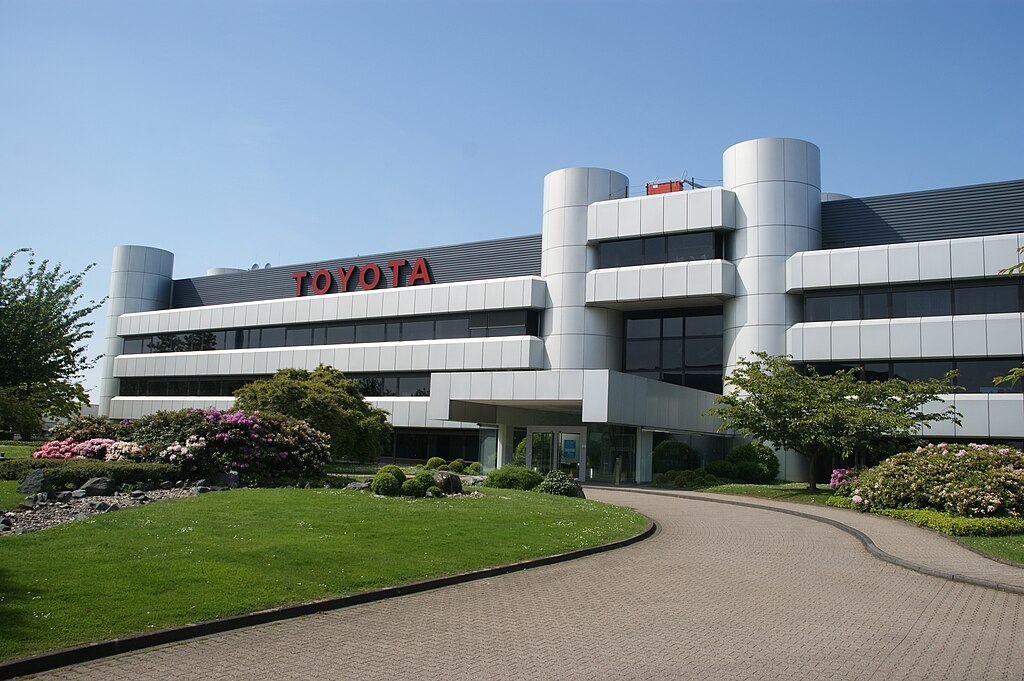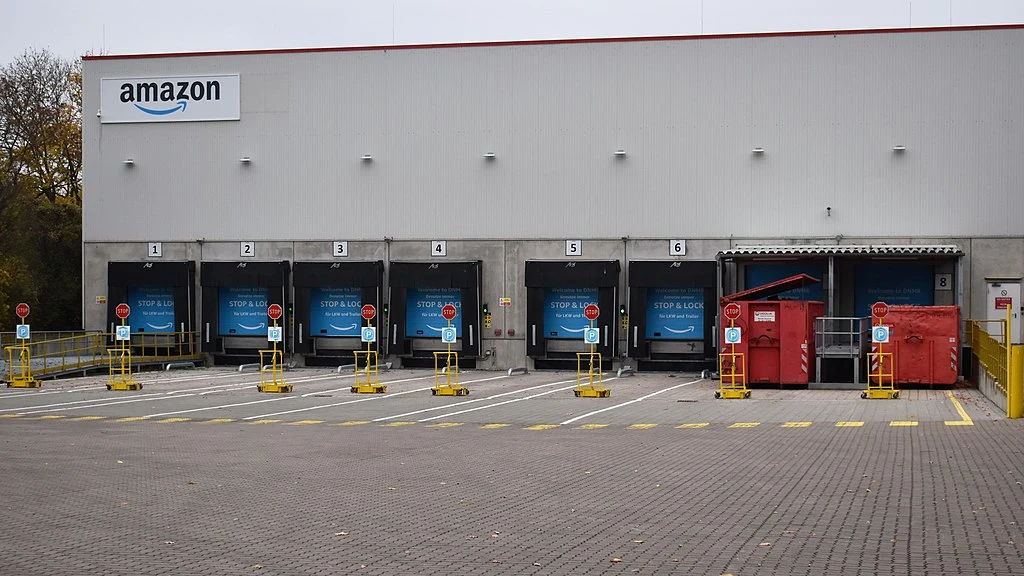What if cutting your lead time by just a few days could save you 30% in operational costs1 and completely transform your business?
It’s 2025, and let’s be real; customers expect lightning-fast turnaround times. If you’re not keeping up, you’re not just losing time; you’re waving goodbye to profits and loyal customers too.
Whether you’re steering the ship at a manufacturing plant or running the show in e-commerce, one thing’s for sure: lead time can make or break your business.
But don’t worry, we’ve got you covered. This blog dives into practical, no-fluff strategies to slash lead times, crank up efficiency, and keep you ahead of the competition.
What Is Lead Time?
Lead time refers to the total duration from the start of a process until its completion, and it is critical across various industries.
- In project management, it measures the time from project initiation to delivery, which directly impacts project timelines and client satisfaction.
- In manufacturing, it refers to the time taken from order placement to the delivery of the finished product, often including procurement, production, and shipping stages.
- In logistics, lead time spans the supply chain, covering the period from raw material procurement to final product delivery.
Lead time is a cornerstone of effective project management, and if you’re looking to build a strong foundation, check out these essential project management tips to set yourself up for success. Companies that reduce it can respond more swiftly to market demands, reducing inventory costs and gaining a competitive edge.
Key Componenets of Lead Time
1. Pre-Processing Time: This is the groundwork phase where the wheels start turning. It includes placing orders, choosing suppliers, and prepping materials. Think of it as the calm before the storm. Nail this step, and you’re already setting yourself up for success.
2. Processing Time: Here’s where the magic happens—whether it’s building, creating, or producing. Efficiency is king at this stage, and keeping things streamlined can make or break your project timeline.
3. Waiting Time: Nobody likes waiting, especially not your deadlines. This is the downtime between steps, often caused by bottlenecks or missing resources. Did you know waiting can eat up over 50% of total lead time in some workflows? Cutting it down is a game-changer.
4. Storage and Transportation Time: This covers the time products or materials sit in storage or get moved around. Too much sitting time? That’s money and momentum slipping through your fingers. Keep things moving to keep costs and delays in check.
5. Inspection and Quality Assurance: Finally, we’re talking quality checks. Yes, they’re non-negotiable, but long inspections can bog you down. The trick? Balance thoroughness with speed to avoid dragging out the process.
Lead Time vs. Cycle Time vs. Delivery Time
| Aspect | Lead Time | Cycle Time | Delivery Time |
| Definition | Total time from the initiation of a process to its completion. | The time it takes to complete a specific task or production unit. | The time taken to deliver a product or service to the customer after completion. |
| Scope | Includes all stages from order/request to delivery. | Focuses on individual tasks or processes within the overall workflow. | Focused solely on the distribution or shipping process. |
| Key Focus | Total duration of the process, including delays and waiting times. | Efficiency of the actual working process. | How long it takes to move the final product to the customer. |
| Measurement Start | When an order or request is placed. | When work begins on the task. | When the product is ready for shipping. |
| Measurement End | When the final product/service is delivered. | When the task is completed. | When the customer receives the product. |
| Use Case | Project management, manufacturing, supply chain, logistics. | Manufacturing, agile development, lean management. | Logistics, distribution, shipping. |
| Example | The time between placing an order for raw materials and receiving the final product. | The time taken to assemble one product unit once all materials are ready. | The time it takes to ship a finished product from the warehouse to the customer’s location. |
Types of Lead Time
#1. Customer Lead Time
Customer lead time is the period between order placement and fulfillment. This timeframe is critical for determining customer satisfaction, as it directly impacts their experience.
In eCommerce and retail, customers expect fast fulfillment; delays can lead to frustration and potential loss of business. Shorter customer lead times enhance satisfaction and boost repeat purchases and positive reviews.
Studies have shown that businesses with optimized customer lead times are more likely to retain loyal customers and improve supply chain efficiency. This time can be reduced through efficient order management, automation, and better supplier coordination.
#2. Manufacturing Lead Time
Manufacturing lead time refers to the total time required to produce a product, from the initiation of production to the completion of the final product.
This metric is crucial for optimizing production efficiency and meeting customer expectations. It encompasses several stages, including order processing, procurement of raw materials, actual production, quality control, and final packaging.
For example, a smartphone company2 may spend 2 days procuring materials, 5 days in production, and additional time on quality checks and packaging, resulting in a total lead time of 10 days.
Managing manufacturing lead time efficiently is a game-changer. When lead times drag on, it’s a recipe for trouble—delays, unhappy customers, and skyrocketing costs from holding too much inventory. Nobody wants that.
The good news? Cutting down lead time is totally doable with the right strategies. Building stronger relationships with your suppliers, streamlining production processes, and embracing automation are all surefire ways to make things run smoother. Not only does this boost efficiency, but it also saves money and gives you an edge over the competition.
Keeping a close eye on your lead time and making improvements where you can helps you allocate resources smarter, hit delivery deadlines, and keep your customers happy. It’s a win-win for your operations and your bottom line.
#3. Material Lead Time
Material lead time is all about how long it takes to get raw materials or components from your suppliers, covering everything from order processing to transportation and receiving. It’s a critical factor in manufacturing because if your materials don’t arrive on time, production grinds to a halt—and that can ripple into longer overall lead times and unhappy customers.
The tricky part? Managing material lead time isn’t always straightforward. Supplier reliability, unpredictable market conditions, and transportation hiccups can all throw a wrench in your plans. But don’t worry—there are strategies that can help.
First, consider diversifying your supplier base. Relying too heavily on a single vendor can backfire if they face delays or disruptions. By spreading your risk across multiple suppliers, you’ll have more options to keep things moving smoothly.
Next, maintaining a safety stock of critical materials can be a lifesaver when unexpected delays hit. It’s like having a cushion to keep production running while you sort out supply chain issues.
Finally, investing in tools like inventory management systems or adopting just-in-time (JIT) practices can strike the perfect balance between supply and demand. JIT helps you avoid overstocking while still ensuring you’ve got what you need when you need it.
#4. Supply Chain Lead Time
Supply chain lead time is essentially the clock ticking from the moment raw materials are ordered to when the final product lands in your customer’s hands. It covers every step along the way—sourcing materials, production, transportation—making it a crucial measure of efficiency and a key driver of customer satisfaction.
Here’s the challenge: longer lead times can throw everything off balance. They can mess up production schedules, leave shelves empty with stockouts, or jack up holding costs because you’re stuck carrying too much inventory.
And it’s not just theoretical—recent global shipping disruptions have stretched lead times for some industries from an average of 30 days to nearly 40 days. That’s a big deal.
So, what’s the fix? It starts with tighter supplier collaboration—think open communication and shared planning. Then there’s inventory optimization: balancing just enough stock to stay agile without overloading.
And don’t overlook the power of tech—supply chain management software and automation tools can give you the real-time visibility you need to streamline processes and adapt to changes on the fly.
The result? Fewer delays, happier customers, and a more resilient supply chain.
Why Lead Time Is Important in Business

Quick Overview
| Impact of Lead Time | Description |
|---|---|
| Missed Deadlines | Long lead times disrupt schedules, causing missed deadlines, unhappy clients, and damage to your reputation. |
| Increased Customer Churn | Customers demand speed; if you can’t deliver quickly, they’ll switch to competitors, leading to reduced loyalty. |
| Operational Inefficiencies | Longer lead times cause bottlenecks, require more manual interventions, and increase labor costs, slowing down processes. |
| Higher Operational Costs | Excess inventory held as a buffer against delays ties up capital and increases storage and handling expenses. |
| Lost Business Opportunities | Slow fulfillment means missed chances to capture market demand, letting competitors gain the upper hand. |
| Reduced Competitiveness | Companies with longer lead times struggle to keep up in fast-moving markets, losing market share to faster rivals. |
| Impacted Revenue Generation | Dissatisfied customers lead to fewer repeat purchases, resulting in significant revenue losses. |
Impact of Lead Time on Inventory Management
Lead time is a big deal when it comes to managing inventory—it’s the key to knowing when to reorder and how much extra stock to keep on hand. Think of your reorder point (ROP) as the signal flare telling you it’s time to restock. To figure it out, there’s a simple formula:
ROP = (Average Daily Demand × Lead Time) + Safety Stock
Safety stock serves as a buffer against uncertainties in demand and supply, ensuring that inventory levels remain sufficient during unexpected fluctuations. Longer lead times necessitate higher safety stock to maintain desired service levels, as there’s a greater window for variability.
Conversely, shorter lead times reduce the need for extensive safety stock, freeing up capital and storage resources.
To mitigate lead time variability in inventory planning, consider the following strategies:
- Classify Your Inventory: Focus on the 20% of SKUs that generate 80% of sales. Prioritize suppliers for these key products, regularly reviewing projected lead times before placing orders. Group essential products with similar lead times to streamline ordering processes.
- Enhance Supplier Relationships: Collaborate closely with suppliers to gain better insights into their processes and potential delays. Establishing strong partnerships can lead to more accurate lead time predictions and improved reliability.
- Implement Just-in-Time (JIT) Inventory Management: Adopt JIT principles to minimize excess inventory by receiving and producing goods just in time to meet customer demand. This approach reduces the need for storage space and lowers lead times.
- Leverage Technology: Utilize demand forecasting tools and inventory management software to predict demand patterns accurately. Advanced analytics can help anticipate lead time fluctuations and adjust reorder points and safety stock levels accordingly.
Impact of Lead Time on Business KPIs
Lead time is a big player when it comes to your business performance. It’s closely linked to your key KPIs—think productivity, operational efficiency, and staying ahead of the competition. When you cut down lead time, you’re speeding up production cycles, boosting productivity, and keeping quality in check.
Plus, better lead time management means you’re nailing those on-time deliveries and order fulfillment rates—essential for staying competitive in today’s fast-paced world.
Shorter lead times don’t just keep things moving—they’re a game-changer. They help you allocate resources smarter, forecast demand more accurately, and respond to market shifts faster.
Simply put, managing your lead time isn’t just a nice-to-have; it’s a must-have if you’re in it for the long haul. It’s not just about fixing today’s problems—it’s about setting your business up for success tomorrow.
How to Calculate Lead Time Formula Accurately
Simply put, Lead Time = Order Delivery Date – Order Request Date.
This calculates the difference between an order’s placement and delivery. This formula helps businesses understand the time it takes from customer requests to final fulfillment, which is critical for maintaining efficiency.
For instance, if an e-commerce customer places an order on January 1st and receives it on January 10th, the lead time is 9 days.
Industry-Specific Examples
In e-commerce, companies like Amazon thrive on reducing lead times to as little as two days. This reduction enhances customer satisfaction by meeting demand faster and improving retention. In manufacturing, lead time spans raw material procurement, production, and delivery.
For example, in the automotive industry, lead times can stretch from weeks to months, depending on supply chain complexity. Companies that optimize lead times through process automation and better supplier coordination have been known to reduce costs by up to 25%3 while also boosting customer satisfaction.
How Long Lead Times Cause Bottlenecks In Supply Chain

Delays in Acquiring Raw Materials
When suppliers are late with raw materials, the whole production line can grind to a halt. Think of it as a domino effect—one delay throws off everything.
Downtime is expensive, costing industrial manufacturers as much as $50 billion a year, and scrambling to make up for lost time often means paying extra for expedited shipping.
To keep things moving smoothly, diversifying suppliers and using predictive analytics to spot potential issues before they snowball can make a huge difference.
Increased Inventory Holding Costs
To avoid disruptions, companies often keep extra inventory on hand. It seems like a safe bet, but holding too much inventory ties up capital and drives up storage costs.
Plus, there’s always the risk of products becoming obsolete or damaged. Instead, implementing just-in-time (JIT) systems and using data-driven inventory management tools can help balance supply and demand without overstocking.
Underutilized Production Capacity
Delays in one part of the supply chain often mean idle workers and machinery in another. It’s a productivity killer—some manufacturers lose up to 20% of their efficiency due to downtime.
To stay agile, businesses should explore flexible scheduling, alternate sourcing options, and better coordination with suppliers to keep production on track.
Domino Effect on Supply Chain Stages
A delay at any stage—whether it’s transportation or procurement—can ripple through the entire supply chain, causing missed production schedules and slower order fulfillment. Tools like real-time tracking and collaborative supply chain platforms can help identify bottlenecks early and keep everything moving.
Customer Dissatisfaction and Missed Deadlines
Customers expect fast, reliable service, and long lead times can quickly erode their trust. In industries like e-commerce and retail, slow delivery isn’t just inconvenient—it can cost you their business.
Offering proactive updates, realistic delivery timelines, and expedited shipping options can go a long way in maintaining customer satisfaction.
Operational Inefficiencies and Increased Complexity
Long lead times add layers of complexity, forcing teams to spend more time and resources planning around delays. This reduces overall agility, making it harder to respond to sudden demand changes.
Simplifying workflows and adopting automation tools can streamline operations and cut down on unnecessary coordination.
Top 5 Strategies to Reduce Lead Time

#1. Streamline Communication for Team Coordination
Clear, fast communication is the backbone of reducing lead times. Miscommunication between procurement, production, and logistics teams can slow everything down.
Tools like Slack, Microsoft Teams, and platforms like Mirorim make real-time collaboration easy. You can instantly share updates on order statuses, flag issues, and adjust production timelines—all while keeping everyone in the loop.
Research shows that using advanced communication tools can boost operational efficiency by 15%4, which means fewer delays and a direct improvement in lead times. When your teams are aligned, decisions happen faster, and problems get solved before they snowball.
If cutting down lead time is your priority, these 10 hacks for reducing project duration offer even more strategies to streamline your workflows.
#2. Automate Processes to Reduce Manual Workflows
Manual workflows are a bottleneck waiting to happen. Enter automation—a game-changer for cutting lead times. Implementing ERP systems like SAP or Oracle can streamline everything from order entry to inventory management and supplier coordination.
For example, automating order processing alone can slash fulfillment time by up to 50%5, speeding up production and deliveries. Add robotic process automation (RPA) into the mix, and you’ve got a system that handles repetitive tasks like data entry, freeing your team to focus on higher-priority, strategic issues. Faster workflows mean faster results.
#3. Build Supplier Relationships: Faster Deliveries
Your suppliers are more than just vendors—they’re key partners in minimizing lead times. Regular communication and transparency help them plan better and deliver on time. Tools like supplier relationship management (SRM) systems allow you to monitor performance, share real-time demand forecasts, and negotiate better terms.
Set clear expectations in contracts, including penalties for missed deadlines, to keep everyone accountable. Companies with strong supplier relationships often report deliveries up to 25% faster6 than those with weak connections. When your suppliers are on the same page, your supply chain runs like a well-oiled machine.
Scrum emphasize coordination among all stakeholders, especially suppliers. That makes it a powerful tool for reducing lead times. Explore our Scrum Project Management guide to maximize productivity.
#4. Improve Forecasting: Demand Optimization
Accurate demand forecasting can make or break your lead times. Machine learning and predictive analytics dig into historical sales data and market trends to give you precise insights. By sharing these forecasts with suppliers and logistics teams, you can avoid overstocking, stockouts, and the delays that come with them.
Businesses using advanced forecasting tools have seen lead times drop by as much as 20%7. Collaborating with suppliers on forecasts ensures raw materials arrive when you need them, keeping production schedules on track and delivery timelines intact.
Agile methodologies play a crucial role in aligning demand with production, and you can dive deeper into proven tactics for efficiency in our Agile Project Management guide.
#5. Inventory Management: Just-in-Time Strategies
Just-in-time (JIT) strategies take inventory management to the next level. The goal? Have materials arrive right when you need them, not weeks earlier. This reduces excess stock, lowers holding costs, and keeps cash flow healthy.
Pairing JIT with automated inventory systems lets you respond quickly to demand changes. Companies using JIT report up to a 30% reduction8 in lead times while maintaining high production efficiency and customer satisfaction. It’s about working smarter, not harder, and staying nimble in a fast-paced market.
Kanban is a natural fit for implementing just-in-time inventory systems, helping you reduce waste and improve lead times. Learn more in our Kanban Project Management guide
Real-World Examples of Managing Lead Time
Toyota: Manufacturing with Just-In-Time (JIT)

Toyota9, one of the largest automotive manufacturers in the world, faced challenges in the 1970s related to overproduction and excessive inventory. In response, the company pioneered the Just-In-Time (JIT) production system, aimed at reducing waste and synchronizing production with real-time demand.
Challenges: Before JIT, Toyota’s supply chain was burdened with excess inventory, leading to inefficiencies in both production and capital use. The company needed to find a way to reduce these inefficiencies while maintaining its reputation for quality.
Result: After implementing JIT, Toyota drastically cut production lead times. This system allowed them to reduce inventory by as much as 75%, cutting storage and overhead costs.
Additionally, it improved agility, enabling the company to respond faster to market changes and customer demands. The ripple effect was seen in the global adoption of lean manufacturing principles.
Dell: Build-to-Order Model for Faster, Customized Delivery

In the 1990s, Dell was one of the first companies to adopt a build-to-order10 approach in the highly competitive computer manufacturing industry. Traditional manufacturing relied on large inventories of pre-built products, leading to high inventory costs and obsolescence risks.
Challenges: Dell needed a more efficient system to minimize inventory costs, improve product customization, and reduce lead times from order to delivery. Its existing supply chain was too rigid, with delays caused by overstocking or product misalignment with customer demand.
Result: By shifting to the build-to-order model, Dell reduced its lead time from weeks to just 4-5 days. This strategy cut inventory costs by nearly 50% and allowed for greater product customization, which became a key selling point for the brand. The reduced lead time also contributed to improved cash flow and higher customer satisfaction.
Amazon: Optimizing Logistics for Ultra-Fast Shipping

As e-commerce exploded in the early 2000s, Amazon11 faced increasing pressure to shorten delivery times to meet customer expectations. Long lead times in the shipping process meant delayed deliveries, reducing customer satisfaction and increasing churn.
Challenges: Amazon’s primary challenge was managing an extensive, geographically dispersed inventory. The company needed to optimize its logistics and fulfillment systems to speed up the order-to-delivery process while maintaining cost efficiency.
Result: Through investments in strategically located fulfillment centers and advanced logistics technology, Amazon reduced its shipping lead times dramatically. By 2015, the company offered two-day shipping to Prime members and introduced same-day delivery in select regions.
These innovations reduced delivery lead times by over 50%, reshaped customer expectations in e-commerce, and gave Amazon a competitive edge over rivals like Walmart.
Conclusion
Mastering lead time isn’t just about saving a few days—it’s about building a supply chain that’s efficient, responsive, and better equipped to handle challenges. You can make lead time work FOR you not AGAINST you by:
- Improving communication
- Automating workflows
- Fostering strong supplier relationships
- Accurate forecasting
The payoff? Fewer delays, smarter cost management, and happier customers. In today’s fast-paced market, these aren’t just nice-to-haves—they’re the foundation of staying competitive.
FAQ | What Is Lead Time?
No, lead time and delivery time are not the same. Lead time includes the entire process from placing an order to receiving it, including manufacturing or production. Delivery time refers specifically to the time it takes for the product to be shipped to the customer after it is ready.
An example of lead time is when a company orders raw materials from a supplier. If the supplier takes 5 days to process the order and ship it, and another 3 days for it to arrive, the total lead time is 8 days.
Lead time on your order refers to the time from when you place your order to when it is delivered to you. It includes all steps such as processing, manufacturing (if applicable), and shipping.
A 2-week lead time means it will take 14 days from the time an order is placed until it is completed and delivered to the customer.
Manufacturing Lead Time: The time taken to produce a product from start to finish.
Material Lead Time: The time it takes to procure raw materials needed for production.
A 3-day lead time means that it will take 3 days from the moment an order is placed until the product or service is delivered.
Lead time hours refer to shorter timeframes within a day, usually in industries where production or shipping is measured in hours rather than days. It represents the number of hours needed to complete a task from start to finish.
The minimum lead time refers to the shortest possible time to complete a process from the moment an order is placed to when it is delivered. This varies depending on the industry and logistical capabilities.
The lead time law, also known as Little’s Law, states that the average number of items in a system (Inventory) equals the product of the average arrival rate of items and the average time an item spends in the system (Lead Time).
Formula: Inventory = Throughput Rate × Lead Time
It is called lead time because it represents the lead or total time between the initiation of a process and its completion, often indicating how long it takes to “lead” a project or order from start to finish.
In the workplace, lead time refers to the time taken to complete a task or project from initiation to completion. This could apply to project management, manufacturing, or any business process where timing is crucial.
HR lead time refers to the time it takes from the moment an HR-related request is initiated (such as recruiting or employee onboarding) to when the request is fully processed or completed.
References
- A03c02d7_Admin. (2023, February 6). Case Study – Cost Savings and Lead Time Reduction – FCA Packaging. FCA Packaging. https://fcapackaging.com/resource-center/case-study-cost-savings-and-lead-time-reduction/ ↩︎
- Manufacturing Lead Time: Importance, How to reduce Production Lead time etc. (n.d.). ACTouch ERP Software. https://www.actouch.com/knowledgebase/manufacturing-lead-time/ ↩︎
- Küpper, D., Sieben, C., Boyne, J., & Li, A. (2022). The Automation Revolution in Manufacturing. In Boston Consulting Group. Retrieved September 8, 2024, from https://web-assets.bcg.com/dd/72/f463a37441d3aeb7a9dd5f8e024a/bcg-the-automation-revolution-in-manufacturing-mar-2022.pdf ↩︎
- The Total Economic Impact Of Microsoft Teams. (2019). In A Forrester Total Economic ImpactTM Study Commissioned by Microsoft. https://www.microsoft.com/en-us/microsoft-365/blog/wp-content/uploads/sites/2/2019/04/Total-Economic-Impact-Microsoft-Teams.pdf ↩︎
- Bangia, M., Cruz, G., Huber, I., Landauer, P., & Sunku, V. (2020, May 13). Sales automation: The key to boosting revenue and reducing costs. McKinsey & Company. https://www.mckinsey.com/capabilities/growth-marketing-and-sales/our-insights/sales-automation-the-key-to-boosting-revenue-and-reducing-costs ↩︎
- Staff. (n.d.). Case Studies: Developing Collaborative Supplier Partnerships. Supply Chain Resource Cooperative. https://scm.ncsu.edu/scm-articles/article/case-studies-developing-collaborative-supplier-partnerships ↩︎
- Ciullo, B. (2024, May 9). Success Story | Ridgerock Tools Case Study | ForecastRx Resources. ForecastRx. https://www.forecastrx.com/inventory-forecasting-resources-2/ridgerock-tools-case-study/ ↩︎
- Cleverence. (n.d.). Just-in-time systems in the spotlight: case studies of three successful companies. https://www.cleverence.com/articles/business-blogs/just-in-time-systems-in-the-spotlight-case-studies-of-three-successful-companies/ ↩︎
- Cleverence. (n.d.). Just-in-time systems in the spotlight: case studies of three successful companies. https://www.cleverence.com/articles/business-blogs/just-in-time-systems-in-the-spotlight-case-studies-of-three-successful-companies/ ↩︎
- Team, O. (2023, October 10). Just-in-Time Inventory Management: Definition, Implementation, and Benefits. Oboloo. https://oboloo.com/blog/just-in-time-inventory-management-definition-implementation-and-benefits/ ↩︎
- O’Neill, S. (2024, February 5). How Amazon reworked its fulfillment network to meet customer demand – Amazon Science. Amazon Science. https://www.amazon.science/news-and-features/how-amazon-reworked-its-fulfillment-network-to-meet-customer-demand ↩︎

